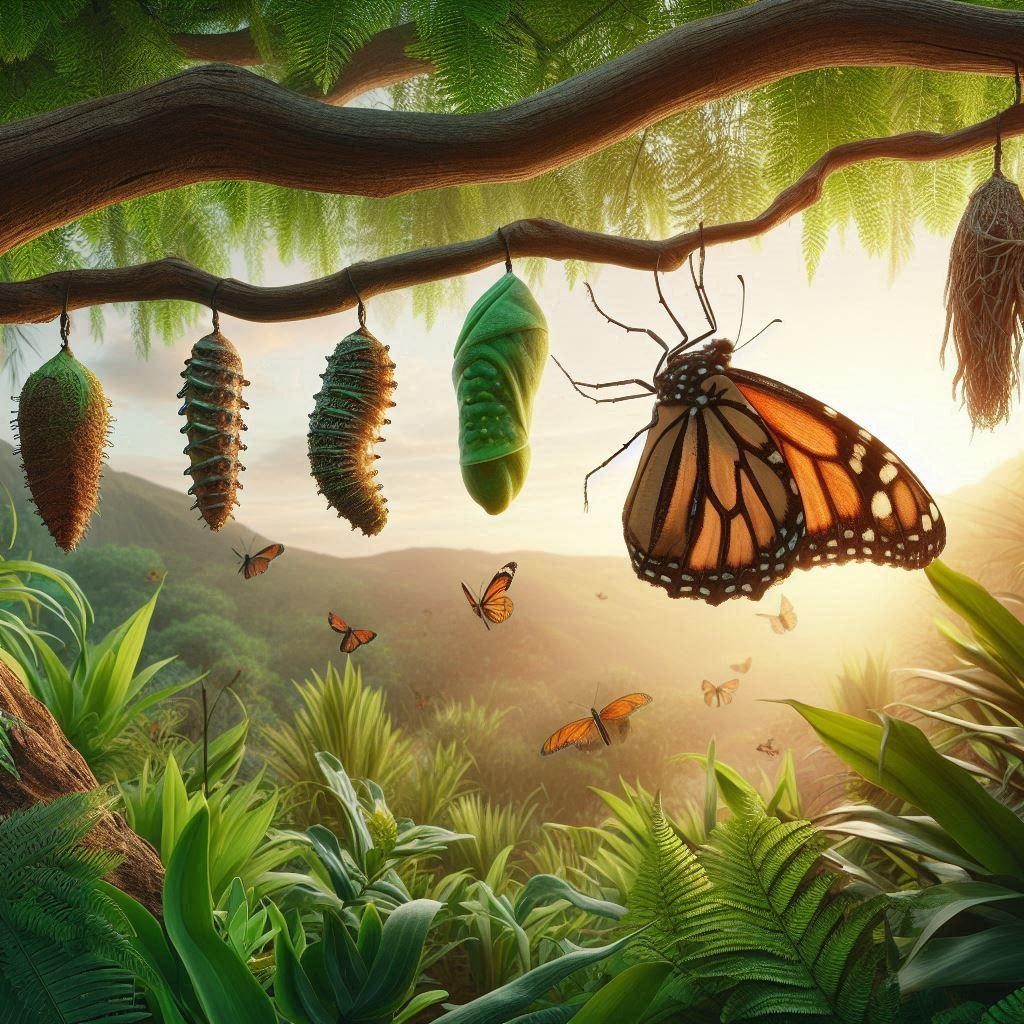Metamorphosis and moulting in nature are like the transformations of a superhero, but without a cape or epic background music. These changes are not only fascinating, but are also essential for the survival and adaptation of animals to their environments, season after season.
- Moulting and metamorphosis, faunal transformations
- Animal wetsuit
- Animal metamorphosis
- Moulting and metamorphosis between evolutionary advantages
Moulting and metamorphosis, faunal transformations
Metamorphosis and moulting are two fundamental processes in the animal kingdom that allow organisms to grow, develop and adapt to their environments.
These changes are driven by complex hormonal and genetic mechanisms.
Metamorphosis is a radical change in the form and structure of an organism during its life cycle. It allows many organisms to go through significant morphological, anatomical and biochemical transformations during their life cycle.
Moulting, on the other hand, is the process of replacing an old cuticle or skin with a new one. This process not only allows animals to grow, but also serves as a mechanism for renewing parts of the body that have become worn or damaged.
For example, in insects, moulting is an obligatory step for growth, since their outer exoskeleton does not expand.
These processes are not only crucial for the development of individuals, but also have a significant impact on ecology and biodiversity.
Animal wetsuit
When an insect grows to a certain point, it must shed its old exoskeleton and soon afterwards form a new one that provides additional space for growth.
In reptiles, skin shedding is equally essential. Snakes, in particular, are known for their ability to mutate their skin into one piece. Lizards, on the other hand, shed their skin in pieces. This also allows them to shed parasites and other impurities that accumulate on the skin.
By moulting their feathers, birds ensure that their plumage remains in optimal condition for flying and thermal insulation.
Mammals, such as dogs and cats, change their fur to adapt to the seasons. During the warmer months, they lose their fur to stay cool, while in winter they grow a thicker coat to protect themselves from the cold.
This not only helps them regulate their body temperature, but can also influence their appearance and protection against the elements.
Animal metamorphosis
Metamorphosis can be classified according to different degrees of change in the animal.
In incomplete metamorphosis, insects go from a nymph resembling the adult but without wings, to a fully developed individual.
For example, grasshoppers undergo a series of moults, going from nymphs resembling adults but smaller and without wings, to fully developed individuals.
In the case of complete metamorphosis, on the other hand, the larva transforms into a pupa or chrysalis, from which the adult emerges; the butterflies begin their lives as eggs, then turn into voracious larvae, commonly known as caterpillars.
These changes may include the moulting of the exoskeleton in crustaceans or the transition from pelagic larvae to benthic adults in some fish.
Moulting and metamorphosis between evolutionary advantages
During moulting and metamorphosis, many animals adopt specific behaviours to protect themselves from predators.
The factors influencing moulting are numerous and can vary greatly between species. Environmental conditions, such as temperature and humidity, can influence the timing and intensity of the process. In addition, moulting can be influenced by hormonal factors, often related to the seasons and reproductive cycles.
The general health of an animal can also have an impact, with sick or stressed individuals experiencing irregular or delayed moulting.
Metamorphosis allows a clear division of ecological niches between juveniles and adults, reducing intraspecific competition. It allows organisms to optimise survival and reproduction strategies in response to changing environmental conditions.
Protecting natural habitats and reducing anthropogenic threats are essential to ensure that these fascinating processes can continue to take place in nature.
Play for the planet!
